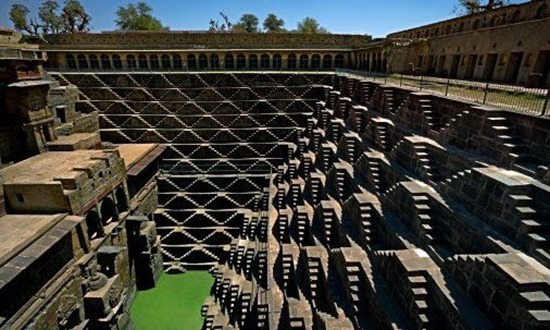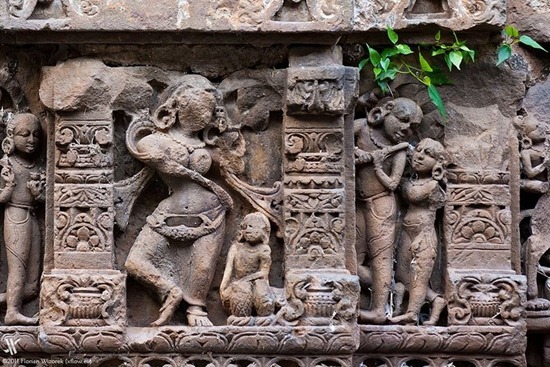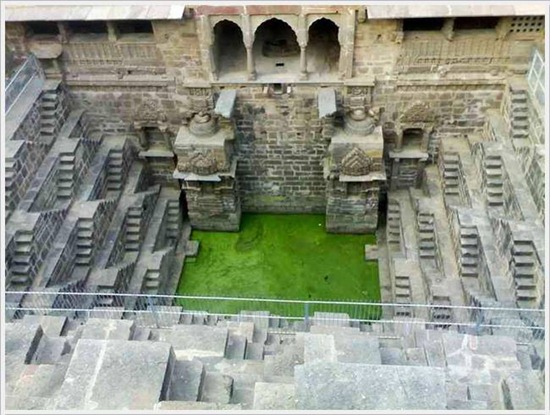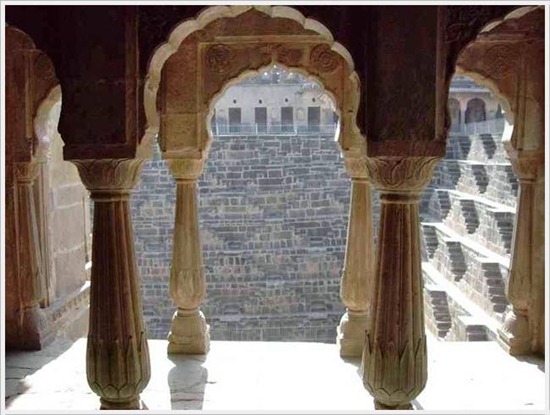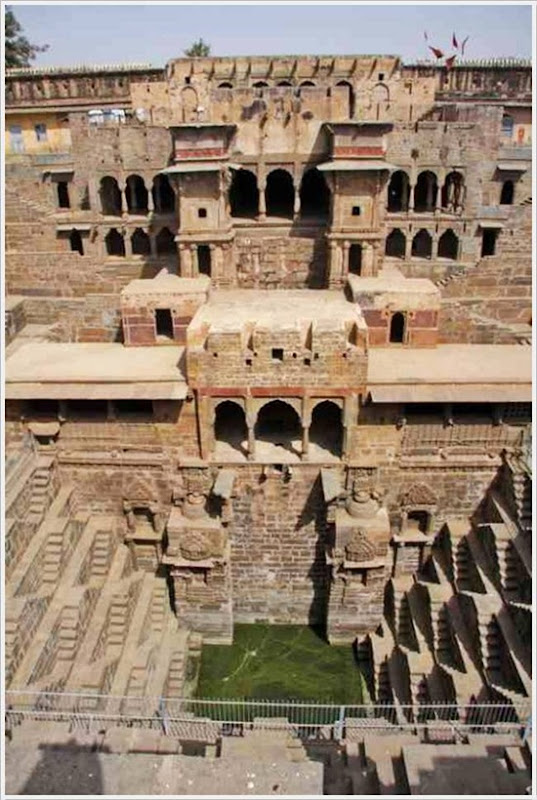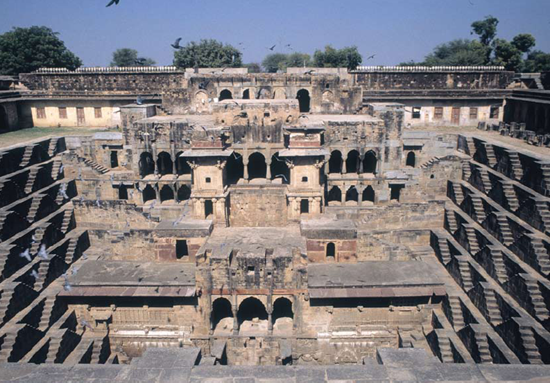A millennium ago, step wells were fundamental to life in the driest parts of India. These unique structures, hewn from stone, provided year round access to groundwater, and were a focal point for the community. During the sixth and seventh centuries the inhabitants developed a method of gaining access to clean, fresh ground water during the dry season for drinking, bathing, watering animals and irrigation. However the significance of this invention “The Step well” goes beyond its utilization application. As their name suggests, step wells comprise a series of steps descending from ground level to the water source as it recedes following the rains. When the water level was high, user needed only to descend a few steps to reach it. When it was low, several levels would have to be negotiated.
The Chand Baori (the biggest baori of India) at Abaneri is India’s largest step-well and a great pit-stop when driving across Rajasthan. Chand-baori is the amazing and elaborate architecture. As you step inside the compound you are filled with pure delight and wonder – how could the human mind use a simple thing like steps to create such attractive patterns? In all the 100-foot deep baori has almost 3500 narrow steps in 13 stories. Its beauty and design has not only stood the test of time (it was built somewhere in the 8th or 9th century) but also the abuses of human neglect.
Chand Baori – in the village of Abhaneri, near Jaipur in the Dausa District of Rajasthan – is the country’s largest step well and one of its deepest. Constructed around 850 AD, it sits in front of the now ruined Harshat Mata temple. In Steps to Water: The Ancient Step wells of India, Morna Livingston notes that it is one of the few water buildings with extensive additions, this making it a fine example of two classical periods of architecture.
Unlike other old wells, which only benefited from minor mending and whitewashing, Chand Baori was refurbished over the centuries: Mughals rebuilt the upper stories as a palace in the eighteenth century, and added a four-sided arcade which effectively closes the well. A terrace above the arcade offers unbroken views of the Harshat Mata temple and farmland to the south and east. The step well is still in excellent condition as a result of these additions and recent restoration work.
The design and ornamentation of the two sections of the well – the upper one, Muslim; the lower, Hindu – are quite different. The short and square Hindu columns – built from extremely hard, almost black, stone of unknown origin – feature crisp carvings and rest on similarly carved railings. According to Livingston, “The simplicity and brevity of the column shafts are attractive, and the pavilions they enclose are dark, simple and well proportioned. In the Muslim portion of the well, however, the columns are carved in an unidentified hard green stone. The palace features more curves and organic shapes, in contrast to the straight lines found beneath it. Livingston also points out the spatial compactness of the stair triangles that run parallel to the step well's edge. “The rise-to-run for each flight adds no more than eighteen inches [45 cm] of width to eight feet [2.4 m] of drop, making an extremely sharp descent. The wall is so steep that the top of the stair triangles, seen from the pond’s brim, alternately hide and reveal the people going down from above.”
